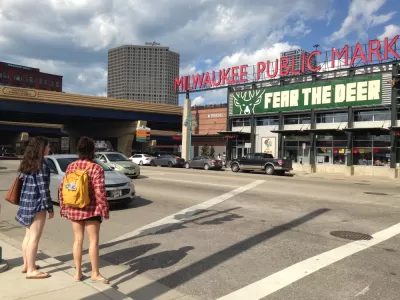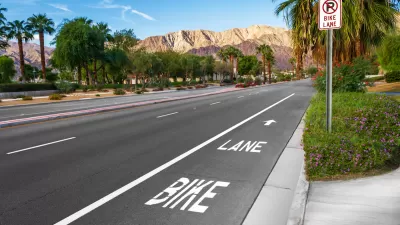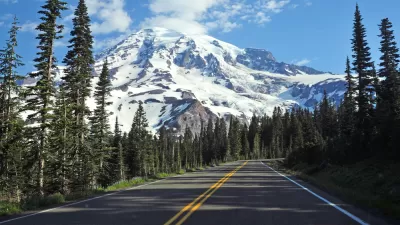The mayor’s office has created a new position responsible for leading the charge on the city’s efforts to eliminate roadway deaths.

Milwaukee will soon gets its own ‘Vision Zero czar,’ a position responsible for coordinating the city’s Vision Zero efforts and leading the charge on eliminating traffic deaths.
In an article in Urban Milwaukee, Jeramey Jannene writes, “The policy is designed to make streets safer for all users, including drivers and pedestrians, by reducing the number and severity of crashes.” The new position, based out of the mayor’s office, will “elevate the importance of the effort,” according to Public Works Commissioner Jerrel Kruschke and Alderman Michael Murphy.
“According to Wisconsin Department of Transportation statistics, 87 people were killed in traffic fatalities in Milwaukee County in 2021, 101 in 2020 and 74 in 2019. Eighty-six fatalities have been reported in 2022,” prompting the city to adopt a Vision Zero policy in June.
One alderwoman has suggested delaying the start date of the position to offer a higher salary than the currently budgeted $53,957, which could help the city recruit a higher-quality candidate.
FULL STORY: Mayor’s Office Adds ‘Vision Zero’ Czar

Alabama: Trump Terminates Settlements for Black Communities Harmed By Raw Sewage
Trump deemed the landmark civil rights agreement “illegal DEI and environmental justice policy.”

Planetizen Federal Action Tracker
A weekly monitor of how Trump’s orders and actions are impacting planners and planning in America.

The 120 Year Old Tiny Home Villages That Sheltered San Francisco’s Earthquake Refugees
More than a century ago, San Francisco mobilized to house thousands of residents displaced by the 1906 earthquake. Could their strategy offer a model for the present?

LA’s Tree Emergency Goes Beyond Vandalism
After a vandal destroyed dozens of downtown LA trees, Mayor Karen Bass vowed to replace them. Days later, she slashed the city’s tree budget.

Sacramento Leads Nation With Bus-Mounted Bike Lane Enforcement Cameras
The city is the first to use its bus-mounted traffic enforcement system to cite drivers who park or drive in bike lanes.

Seattle Voters Approve Social Housing Referendum
Voters approved a corporate tax to fund the city’s housing authority despite an opposition campaign funded by Amazon and Microsoft.
Urban Design for Planners 1: Software Tools
This six-course series explores essential urban design concepts using open source software and equips planners with the tools they need to participate fully in the urban design process.
Planning for Universal Design
Learn the tools for implementing Universal Design in planning regulations.
Ada County Highway District
Clanton & Associates, Inc.
Jessamine County Fiscal Court
Institute for Housing and Urban Development Studies (IHS)
City of Grandview
Harvard GSD Executive Education
Toledo-Lucas County Plan Commissions
Salt Lake City
NYU Wagner Graduate School of Public Service





























